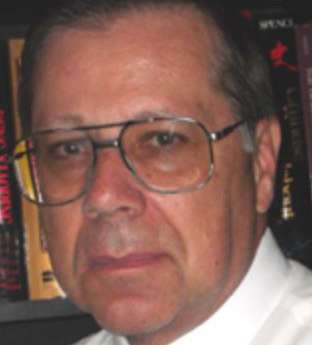
By JOHN RICHARD SCHROCK
“Into the valley of death rode the six hundred.” This famous phrase is part of the poem, “The Charge of the Light Brigade,” written by Alfred Lord Tennyson, the British Poet Laureate. Put to paper only a few days after he heard of the disastrous event, this poem remains with us in modern times with its phrases “half a league, half a league, half a league onward,” “cannon to right of them, cannon to left of them,” and “theirs not to reason why, theirs but to do and die.”
The location of this disastrous battle was Crimea, a peninsular region extending into the Black Sea. Placed under the jurisdiction of Ukraine in 1954 and then annexed back to Russia in 2014, it has a history that deserves our understanding.
The Crimean War raged from October of 1853 to early in 1856. France and Russia had been in increasing disputes between their Roman Catholic and Russian Orthodox churches. Russians had concerns about protecting Orthodox members in Palestine and Ottoman regions. Thus, the French, British and Ottoman Turkish found themselves fighting against Russian forces.
The heralded sense of bravery and duty became a senseless slaughter when, on October 25, 1854, 670 soldiers in the British Light Cavalry Brigade charged into a valley where nearly 25,000 Russian soldiers with artillery inflicted over 270 casualties in crossfire.
Many of the wounded in this Crimean War were ferried across to hospitals that provided the minimal care of the time, roughly the minimal care our soldiers would experience in our about-to-occur Civil War. This is where a genuine hero, Florence Nightingale, and a staff of nearly 40 volunteer nurses and 15 Catholic nuns were sent to serve. Wounded soldiers from the Crimean War were in Selimiye Barracks in Scutari, where Nightingale’s group arrived in November 1854.
Florence Nightingale would organize the care of the wounded soldiers and train nurses. Nursing grew in reputation and began to be seen as a profession. Visiting and caring for the wounded both day and night led to reverence for her as “The Lady with the Lamp.” Returning to England, she established her nursing school in London at St. Thomas’ Hospital.
Due to its critical port location and mixture of ethnic groups, Crimea continued to have internal strife and suffer from Imperial Germany and both World Wars. But aside from wartime disruption, Crimea had always been a part of Russia.
Then in 1954, Nikita Khrushchev as General Secretary of the Communist Party of the Soviet Union, transferred Crimea from under the Russian Federation to become a region within Ukraine. Here it is important to realize that Sevastopol, the largest city in Crimea, has always been an important naval base. While Russia does have other naval bases that are ice free in winter, this was to some extent Russia’s equivalent of our Pearl Harbor. So why would Khrushchev merge it with Ukraine?
Crimea’s population was over three-fourths Russian. There was a large minority of Russians in Ukraine. By fusing Crimea with Ukraine, the 860,000 Russians in Crimea would increase Russian influence in Ukraine. Indeed, Khrushchev had no reason to foresee the collapse of the Soviet Union. His hubris seemed reasonable at that time. But in 1991, the Soviet Union did collapse. Ukraine was now independent with Crimea as an autonomous republic within its borders.
In 2014, a popular revolt ousted the head of the Ukrainian government. The Parliament of the Autonomous Republic of Crimea then voted to secede from Ukraine and be annexed by the Russian Federation. A referendum was held in Sevastopol on March 16, 2014 with a nearly 90 percent participation and over 95 percent of voters choosing to join Russia. Insofar as this was a Russian majority city, we do not hear of claims of voter fraud despite many nations refusing to accept Crimea as now divorced from the Ukraine.
Today it is our duty to reason why. There is no longer any excuse to just blindly “do and die.” And were she alive today, Florence Nightingale would be the first to discourage reckless actions that would fill military hospital wards.
. . .
John Richard Schrock has trained biology teachers for more than 30 years in Kansas. He also has lectured at 27 universities during 20 trips to China. He holds the distinction of “Faculty Emeritus” at Emporia State University.





